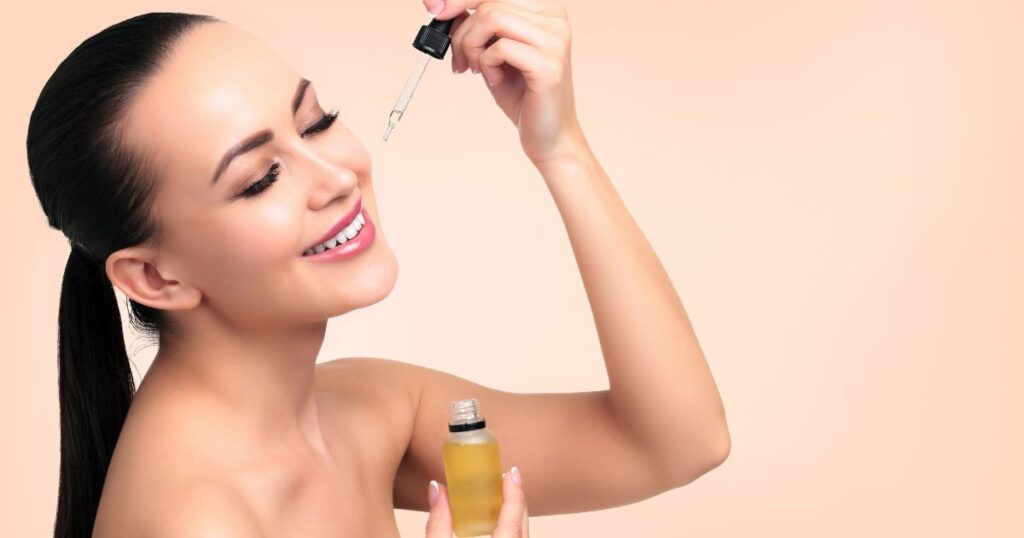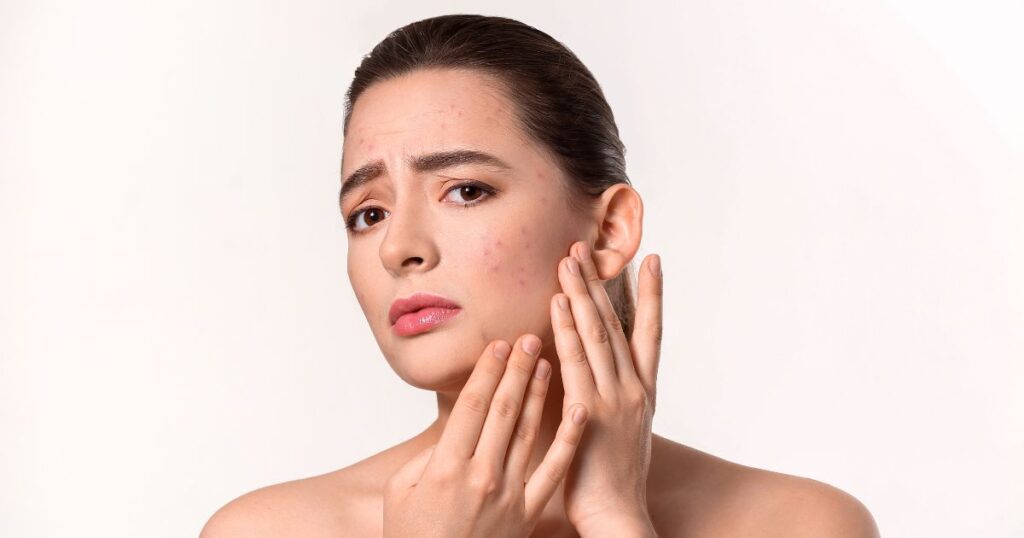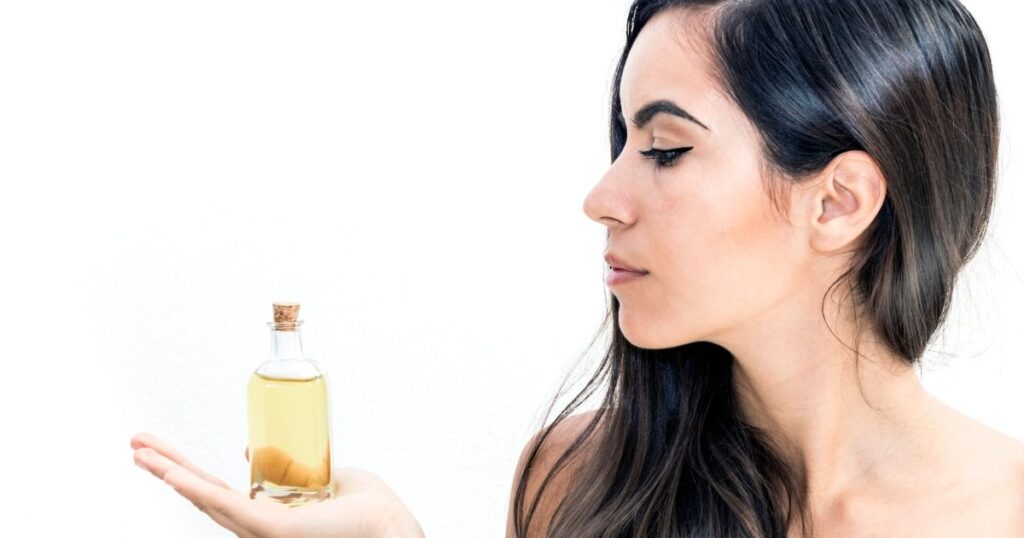Tea tree oil stands as a powerful natural remedy within the clean beauty industry, renowned for its extensive therapeutic benefits. Australian tea tree oil is extracted from the leaves of the Melaleuca alternifolia tea tree, a native Australian plant, and is celebrated for:
- Antibacterial Properties: Effectively combats bacteria to maintain clear skin.
- Anti-Inflammatory Qualities: Reduces redness and swelling, soothing irritated skin.
- Antifungal Capabilities: Addresses fungal infections, promoting overall skin health.
From treating skin conditions like acne and dandruff to improving scalp health, alternifolia tea tree oil offers a natural solution that supports both beauty and wellness.
Table of Contents - Click to Go
What is Tea Tree Oil Used For?
Common Uses of Tea Tree Oil:
- Acne Treatment: Its antibacterial properties help reduce the occurrence of acne-causing bacteria on the skin.
- Skin Infections: Applying tea tree oil topically is effective against various bacterial and fungal skin infections.
- Athlete’s Foot: The antifungal qualities of tea tree oil cream make it a popular choice for treating fungal foot infections.
- Dandruff: Tea tree oil shampoo helps alleviate flaky scalp conditions by targeting fungal growth.
- Skin Tags: Anecdotal evidence suggests that tea tree oil products may help in reducing skin tags.
The effectiveness of tea tree oil in these applications is primarily due to its:
- Antibacterial Properties: It helps in combating bacteria.
- Anti-inflammatory Effects: These properties help reduce redness and swelling.
- Antifungal Abilities: It prevents and treats fungal infections.
From a clean beauty perspective, the appeal of tea tree essential oil lies in its status as a natural, chemical-free option. Using tea tree oil aligns with the principles of clean beauty, which prioritize health and sustainability without compromising effectiveness.
Can Tea Tree Oil Be Applied Directly to the Skin?

Tea tree oil is highly concentrated and can be potent, which means it is generally advised not to apply it directly to the skin without dilution. Using tea tree oil in its undiluted form can lead to irritation, especially for those with sensitive skin.
Steps to Safely Dilute and Apply Tea Tree Oil:
- Choose a Carrier Oil: Select an organic, cold-pressed carrier oil like almond or coconut oil. These oils maintain the purity of the blend, fitting perfectly into a clean beauty routine.
- Mixing: Typically, a safe dilution ratio is about 1-2% tea tree oil to carrier oil. This means adding 1-2 drops of tea tree oil per teaspoon of carrier oil.
- Patch Test: Before applying the mixture extensively, perform a patch test on a small area of your skin to check for any adverse reactions.
- Application: Use the diluted tea tree oil on the affected area with a clean cotton swab or pad.
From a clean beauty perspective, it’s crucial to emphasize the use of organic and natural carrier oils to avoid introducing synthetics into your skincare routine. These practices ensure that the regimen remains aligned with clean beauty principles, focusing on safety, natural ingredients, and environmental consciousness.
How Does Tea Tree Oil Help Treat Acne?

Tea tree oil gel is a popular natural remedy for acne due to its remarkable antimicrobial and anti-inflammatory properties. These features make it an effective tool in the fight against acne, targeting the root causes without the harshness of chemical treatments.
Key Properties of Tea Tree Oil for Acne Treatment:
- Antimicrobial: Tea tree oil helps reduce the bacteria that can cause acne breakouts.
- Anti-inflammatory: It soothes the skin, reducing the redness and swelling often associated with acne.
Evidence Supporting Tea Tree Oil’s Effectiveness:
Studies have shown that tea tree oil can significantly reduce both the number and severity of acne lesions. It is considered a gentler alternative to more aggressive acne treatments like benzoyl peroxide.
Clean Beauty Tip:
Using tea tree oil as part of your acne treatment regimen promotes a clean beauty approach by avoiding harsh chemicals. The natural efficacy of essential oils supports skin health sustainably, aligning with clean beauty values.
Here’s how to integrate tea tree oil into your acne treatment plan:
- Preparation: Mix a few drops of tea tree oil with a carrier oil or aloe vera gel for a soothing effect.
- Application: Apply the mixture to the affected areas after cleansing and before moisturizing.
- Consistency: Regular use can help manage acne flare-ups effectively.
By choosing tea tree oil, you are opting for a gentle, effective solution that harmonizes with the principles of clean beauty—safety, natural ingredients, and environmental responsibility.
Can Tea Tree Oil Remove Skin Tags?

Tea tree oil is often discussed in the context of natural remedies for removing skin tags. While the evidence is largely anecdotal, many users report positive results when using tea tree oil for this purpose.
Understanding the Anecdotal Evidence:
- Users typically apply a few drops of diluted tea tree essential oil to a cotton ball.
- The cotton ball is then secured over the skin tag with a bandage, allowing prolonged contact.
- This process is repeated daily until the skin tag dries out and falls off, which can vary in time depending on individual cases.
Despite these anecdotal reports, there is limited scientific research to fully support these claims. However, the antiviral and antifungal properties of tea tree oil that make it effective for other skin issues may contribute to its potential effectiveness against skin tags.
Clean Beauty Perspective:
Using tea tree oil as a remedy for skin tags aligns with clean beauty principles by providing a non-invasive alternative to conventional treatments such as surgical removal or chemical methods. It offers a natural and gentle option, minimizing exposure to synthetic chemicals.
Safety Tips:
- Always dilute tea tree oil with a carrier oil to prevent skin irritation.
- Perform a patch test before regular application to ensure there is no allergic reaction.
- Consult a healthcare provider if the skin tag changes in appearance or if any irritation occurs.
How Does Tea Tree Oil Improve Scalp Health?
Tea tree oils are celebrated not just for its skin benefits but also for its efficacy in improving scalp health. Its antifungal properties are particularly beneficial in combating scalp conditions such as dandruff and seborrheic dermatitis.
Key Benefits of Tea Tree Oil Shampoo for the Scalp:
- Antifungal Properties: Helps reduce yeast overgrowth, which can cause flaky, itchy scalp conditions.
- Cleansing: Effectively cleanses the scalp, removing build-up and promoting hair follicle health.
Incorporating tea tree oil into your scalp care routine can be done through homemade treatments or by adding it to your existing hair care products. Here’s a simple way to use tea tree oil for scalp health:
- Tea Tree Oil Scalp Massage Mix:
- Mix a few drops of tea tree oil with a tablespoon of a carrier oil like jojoba or coconut oil.
- Massage the mixture into your scalp before washing your hair.
- Leave it on for at least 10-15 minutes to allow the oil to penetrate and work its magic.
- Wash out with a gentle shampoo.
- Adding to Shampoo:
- You can also add a few drops of tea tree oil directly to your shampoo bottle. Shake well to distribute the oil evenly.
Clean Beauty Insight:
Opting for tea tree oil as a scalp treatment emphasizes the clean beauty ethos of avoiding synthetic ingredients. By choosing natural solutions, you support not only your health but also a more sustainable and environmentally friendly beauty practice.
Is Tea Tree Oil Effective for All Skin Types?
Tea tree oil’s versatile nature makes it suitable for a wide range of skin types, but it’s essential to consider individual skin sensitivities and conditions when incorporating it into your skincare regimen.
Effectiveness Across Different Skin Types:
- Oily Skin: Tea tree oil’s antibacterial properties help control excess sebum production, making it ideal for oily and acne-prone skin.
- Dry Skin: When mixed with hydrating carrier oils, tea tree oil can soothe dry skin without over-drying it.
- Eczema-Prone Skin: Its anti-inflammatory properties may reduce irritation and discomfort associated with eczema, though it should be used with caution.
Addressing Concerns for Sensitive Skin:
Sensitive skin users should approach tea tree oil with caution due to its potency. Here are some tips:
- Dilution is Key: Always dilute tea tree oil with a suitable carrier oil to minimize the risk of irritation.
- Patch Test: Conduct a patch test on a small skin area before widespread use to ensure there is no adverse reaction.
Clean Beauty Advantage:
The use of tea tree oil supports the clean beauty philosophy by providing a natural alternative to chemically-laden products. Its adaptability to different skin needs while maintaining a commitment to natural, non-toxic ingredients showcases its role as a cornerstone in clean beauty routines.
Add Tea Tree Oil to Your Skincare Routine for a Natural Remedy

From its effectiveness in treating acne and skin tags to its role in enhancing scalp health, tea tree oil proves to be a versatile and essential component in natural skincare and hair care routines.
Key takeaways include:
- Versatility: Suitable for various skin types, tea tree oil adapts to diverse beauty needs.
- Natural Efficacy: It provides a chemical-free alternative to conventional treatments, aligning with clean beauty principles.
- Safety Practices: The importance of diluting tea tree oil to ensure safe application cannot be overstated.
FAQ
Can tea tree oil cause allergic reactions?
Yes, while rare, some individuals may experience allergic reactions to any essential oil, including tea tree oil, particularly if it is used undiluted. Always perform a patch test before full application and consult a healthcare provider if you experience symptoms like rash, itching, or swelling.
How long does it take to see results from tea tree oil treatments?
Results can vary based on the condition being treated and individual skin types. For some, improvements may be noticeable within a few days, while for others, it might take several weeks of consistent use.
Can tea tree oil be used for pets?
Tea tree oil can be toxic to pets, especially cats and dogs, when ingested or applied in large quantities. It is recommended to consult a veterinarian before using it around pets.
What are the best carrier oils to mix with tea tree oil?
Common carrier oils include coconut oil, almond oil, and jojoba oil. These oils help dilute tea tree oil and reduce the risk of skin irritation.
How often can tea tree oil be applied to the skin?
It depends on the purpose of use and skin sensitivity. Generally, tea tree oil can be used once or twice daily after being properly diluted, but less frequently for sensitive skin.
Is tea tree oil safe for pregnant or breastfeeding women?
Pregnant and breastfeeding women should consult their healthcare provider before using tea tree oil as it can have different effects based on individual health conditions and the stage of pregnancy.
Can tea tree oil help with nail fungus?
Yes, tea tree oil has antifungal properties that can be effective against nail fungus. Regular application of diluted tea tree oil can help improve the condition over time.
How should tea tree oil be stored?
Store tea tree oil in a cool, dark place away from direct sunlight to maintain its efficacy. It should also be kept in an airtight container to prevent oxidation.

